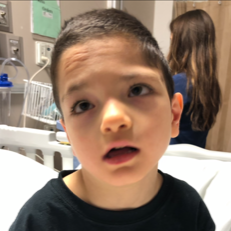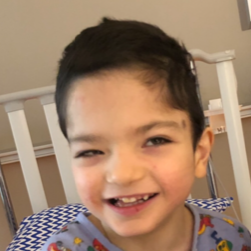
Mar 30, 2020
The participant was born early at 36 weeks. During the pregnancy, the participant’s mother had preeclampsia and gestational diabetes. After birth, the participant was found to have heart defects (atrial and ventricular septal defects), brain abnormalities (hydrocephalus, agenesis of the corpus callosum, porencephalic cyst and arachnoid cyst), and skull abnormalities (brachycephaly, turricephaly). He was in the Neonatal Intensive Care Unit (NICU) for 43 days after birth. At 3 weeks, a shunt was placed to relieve excess fluid in his brain.
At 6 months, the participant was hospitalized for spasms. He has had seizures ever since. He was also found to have hearing and vision loss. An MRI of the spine showed an abnormal fat deposit on his spinal cord, which was removed surgically.
The participant has severe developmental delay. At 4 months old he smiled and rolled over; however, he is currently non-verbal and does not walk.


Clinicians and researchers are investigating the following genetic changes to see if they are causing the participant’s symptoms:
If this participant sounds like you or someone you know, please contact us!